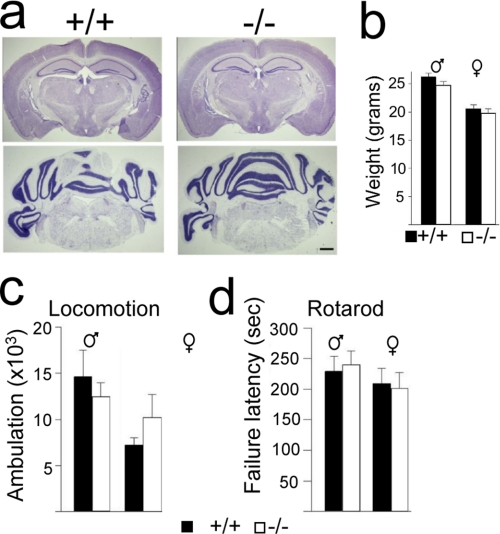FIGURE 2.
Disruption of L3mbtl1 is compatible with ostensibly normal CNS development and function. a, normal brain morphology and cytoarchitecture in L3mbtl1−/− mice. Representative 15–20-μm-thick Nissl-stained coronal sections display normal morphology and cytoarchitecture in forebrain (upper panels) and hindbrain (lower panels) of 6–8-week-old mutants (right) and littermate controls (left). Scale bar, 0.5 mm. b, unaltered body weight after disruption of L3mbtl1 (mean ± standard error (S.E.), n = 8–15 animals/group; black bars, control; white bars, mutants). c and d, behavioral testing. c, locomotor activity is not perturbed in the absence of L3MBTL1. Shown is the total ambulation over 17 h tracked with a photobeam (5 p.m. to 10 a.m.; summed ambulation, means ± S.E., n = 4–6 animals/group). d, rotarod motor coordination performance is not perturbed in L3mbtl1−/− mice. The bar graph shows latency to failure in seconds (see “Experimental Procedures”; day 2, three-trial mean ± S.E., n = 5).

